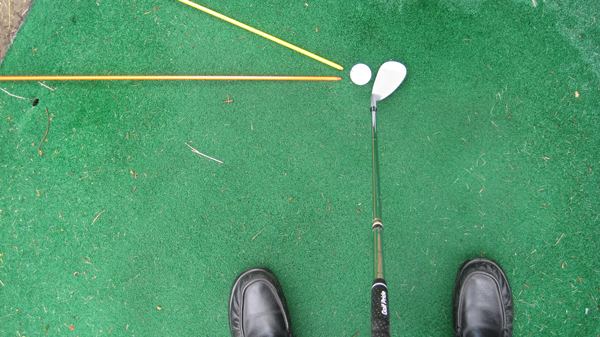There’s a class of golfers who are on the cusp of breaking what I call a milestone score—100, 90, or 80. (If you’re trying to break 70, you don’t need my help.)
I’ll tell you right now, that if you’re flirting with that 99, 89, or 79, you’re already good enough to get there. What’s keeping you back is not be coming a better shotmaker, but a better player.
Golf is a game you play. Good shots get you in the ball park you want to be in. The right shots bring you home.
Example. I was playing a few days ago and my second shot on a par 4 ended up on a mound about five feet above the level of the green, maybe 30 feet from the hole. I took out my sand wedge and pitched on. The ball landed about three feet from the hole, but rolled about ten feet past.
That sounds all right, maybe, but it was the wrong shot. I had released to clubhead, that is, let my hands turn over. That puts a moderate amount of spin on the ball, which is why it ran so far past.
I was playing solo, so I dropped another ball and this time held off the release so at the finish, the clubface was still facing to the sky. That puts a lot of spin on the ball. The ball flew the same, landed close to the same spot as before, but rolled out less than one foot. Tap-in par.
The first shot was a good shot. It was just the wrong shot, which added a stroke to my score, whereas hitting the right shot would have kept my score down.
Now there’s a difference between the wrong shot and a bad shot. We all miss shots, make bad ones, even if they were the right shot. That’s why we’re handicap golfers.
But the more you know about how to play the game, the lower your score will be with the same skills.
Raymond Floyd wrote this in his book, The Elements of Scoring, which I highly recommend: “If somehow I was given your physical (golf) game and we had a match I would beat you 99 times out of 100, because I know how to play the game better than you do”
Got that?
Here’s another example. Earlier in that round, I was on a sharp upslope in front of the green about 40 feet from the pin. Since an upslope adds loft to the club, I chose a 52-degree wedge to chip on with. I hit a good shot that finished about 15 feet past the hole. So I tried another shot, with a 56-degree wedge. Same stroke, different club. The ball finished about four feet past the hole.
In the first example, it was the right cub, but the wrong stroke. In the second example, it was the right stroke, but the wrong club.
Do you see what is going on here? These little things are what can add strokes to your score that you don’t reflect your skill level. Your score doesn’t reflect how well you hit the ball so much as how well you play.
In that nine holes, there were four occasions where I hit a wrong-shot do-over that saved a stroke. The bad shots I let lie. All that turned a 42 into a potential 38.
Four shots in eighteen holes is a lot, but four shots in nine holes is enormous.
I strongly recommend that you find time, on occasion to play a solo round when the course isn’t busy and do what I did. You will learn a ton about being a better player, which is all you need to be to break that milestone score.




